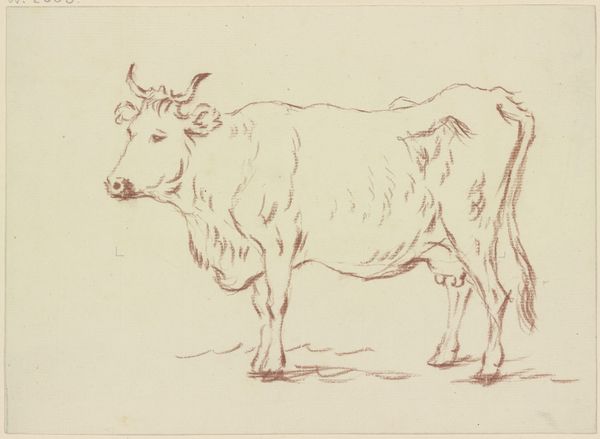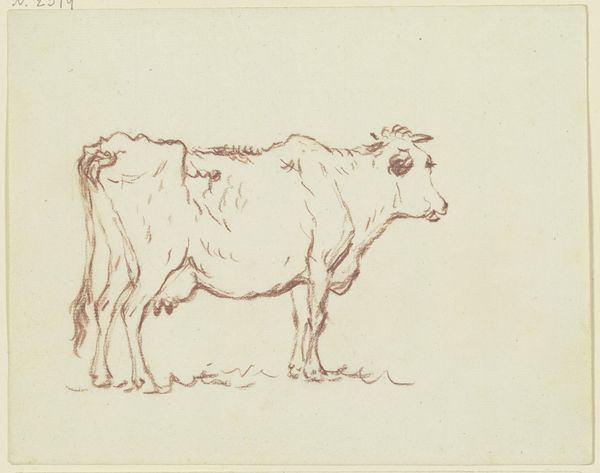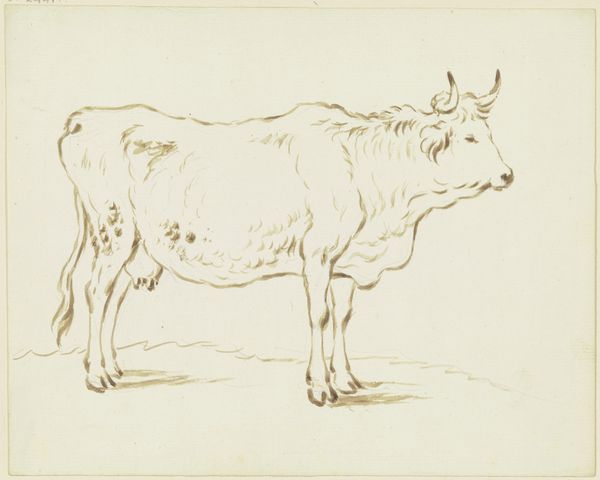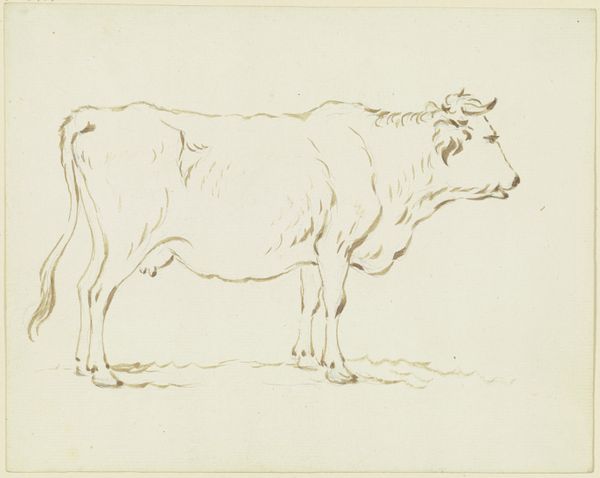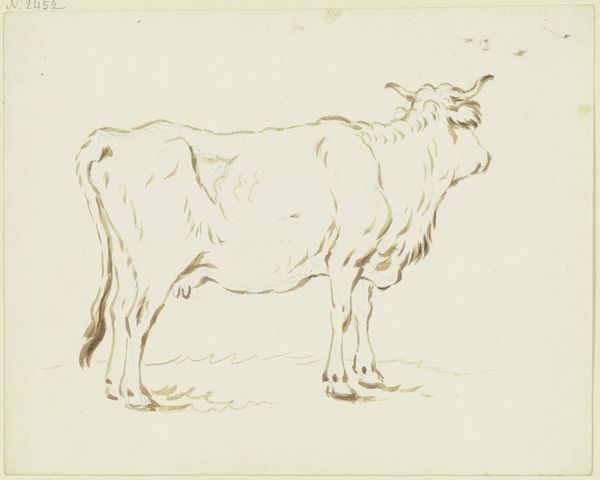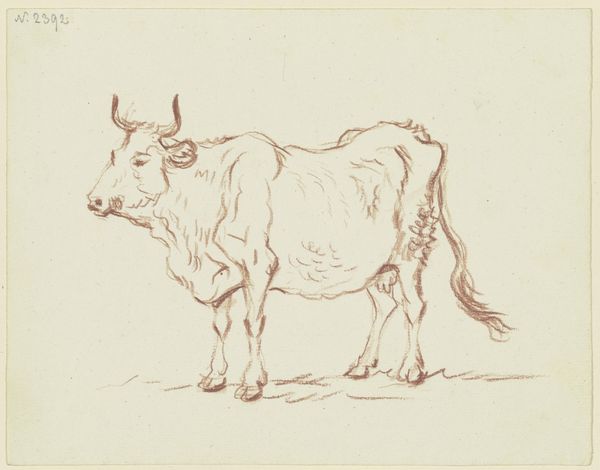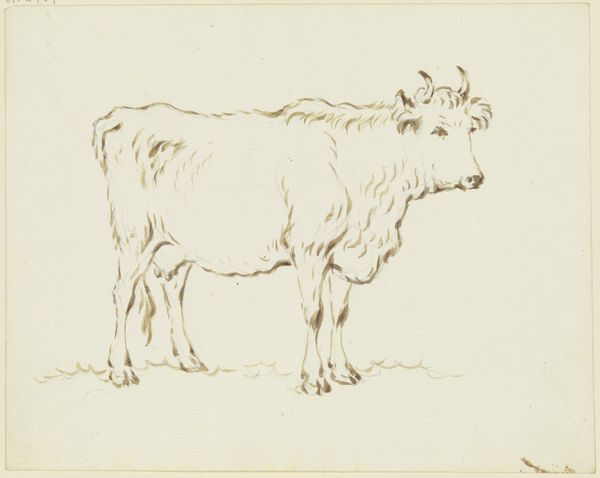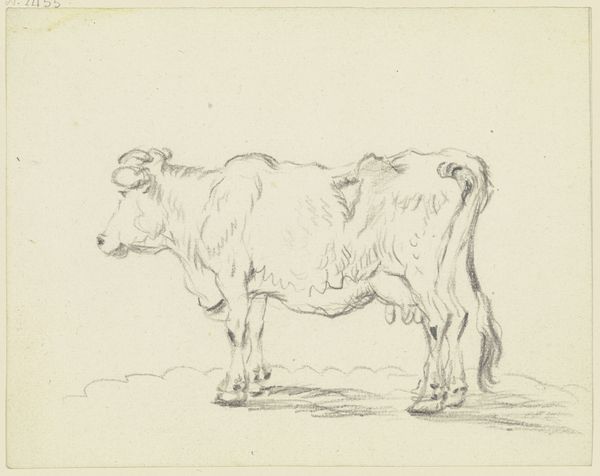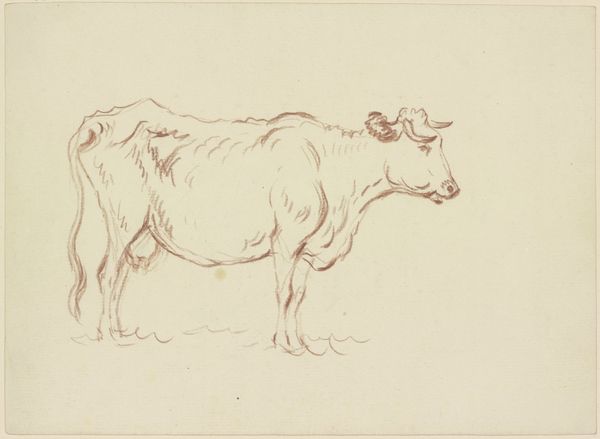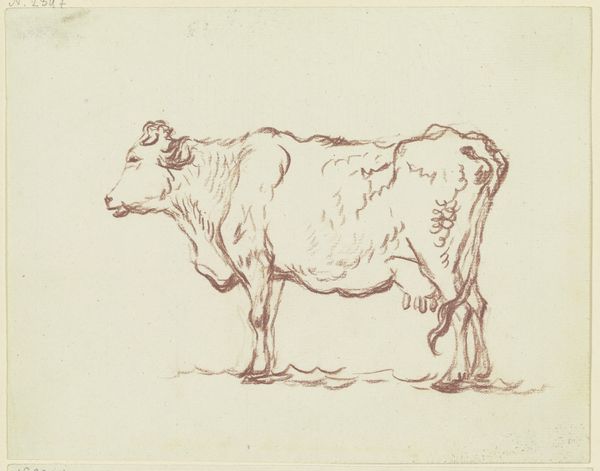
Stehende Kuh nach links, mit leicht gehobenem rechten Hinterlauf
0:00
0:00
drawing, charcoal
#
drawing
#
ink drawing
#
landscape
#
etching
#
charcoal
#
realism
Copyright: Public Domain
Curator: Welcome. Today we're observing Friedrich Wilhelm Hirt's "Stehende Kuh nach links, mit leicht gehobenem rechten Hinterlauf," a drawing currently housed in the Städel Museum. The materials used include ink and charcoal in the making of the drawing. Editor: Immediately, I see a quiet solemnity in this study of the cow. The slight lift of her leg lends an almost tentative, pondering feel, though perhaps it’s simply a momentary weight shift. Curator: I'm interested in the artist's focus on this particular animal as it points to early 19th century modes of agricultural life and landscape traditions. Hirt's dedication to a singular subject emphasizes its integral position within daily living. The very material—charcoal, a product of burning wood—speaks to human interaction with the landscape. Editor: Agreed. There's something ancient and elemental about the lone cow, standing on what looks like a barely-there terrain, emphasizing an enduring image. Think of the cow as a symbol – the nurturing mother, an emblem of fertility, connecting us back to the land, our ancestry and traditions. Curator: Yes, but there's also the reality of labour embodied here. Someone milked that cow; someone tended to it. The drawing makes me consider all that unseen activity that anchors our societies and histories. What kind of conditions does it exist in? How well is she treated, the cow and the farmers? Editor: I see that, yet the absence of explicit background invites the projection of one's own idealized pasture. What matters here, I suspect, is less the documentary impulse, but to invite empathy towards this placid creature. Curator: Perhaps the image is, intentionally or not, prompting us to meditate on our dependence and the costs to sustain ourselves. We are consumers. I will think about that when purchasing materials for art and even in my day to day. Editor: So, while you explore how it reflects the world around you, I see a creature that embodies so much human hope, that it’s a powerful icon in itself, regardless of the circumstances that brought it into being. Curator: Indeed. Hirt's work is far more involved with rural society and work and, as an artist, I appreciate that it has captured such complexity and material relationships in a seemingly modest drawing.
Comments
No comments
Be the first to comment and join the conversation on the ultimate creative platform.


